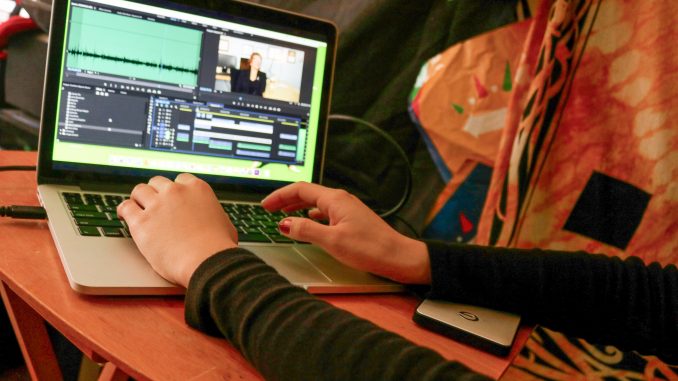
Ross Weisman has a basket full of stuffed animals in his closet, and he sleeps with them regularly.
“Comfort objects” are stuffed animals, blankets or any other item that makes a person feel safe. It wasn’t until he started a documentary on the subject that Weisman realized his stuffed animals don’t make him “crazy” — they might actually be a normal and healthy thing.
Weisman, a junior media studies and production major, is in the media studies class, Genres of Media Production, taught by professor Kristine Weatherston. The course is divided into different sections like documentary filmmaking, augmented media and sports production.
Weisman and four other media studies and production majors, Jenny Choi, Colin Pawlowski, Brian Ziff and Nailah Adam, are part of the documentary section. The group has been working on a documentary called “Mine,” which focuses on comfort objects, since September.
Each of Weatherston’s students was required to pitch an idea for a documentary, then students voted on which ones they liked best.
“[Comfort objects] was the one that stuck with me,” Weisman said. “In the back of my mind, I always kind of wondered [when], going to summer camp, why I was the only boy that had a plush dog or something with me.”
Pawlowski, a senior media studies and production major, originally wanted to follow Philadelphia comedians, but when he heard Weisman’s idea, it resonated with him.
“Just the idea of comfort in itself … I think that was the most exciting thing about it,” Pawlowski said. “It was scary to think of something like that.”
He said the topic of comfort changed what he thought would be a fun project with friends to a documentary exploring important issues.
“Comfort is just this huge umbrella of so many different things we could talk about and that’s exciting, but also that leaves us with a duty to cover stuff that really needs to be covered,” he added. “I felt like I have a duty now.”
The class was then divided into four groups of five, and each spent the semester working on their topic. Weisman’s group took his pitch and settled on the title, “Mine.”
As the group continued the production process, the subject continued to evolve and grow deeper than they originally expected.
The group interviewed psychologists, people who struggle with mental illness and directors of the Philadelphia Children’s Alliance, which works with children who are survivors of sexual abuse.
“When you talk to people about these subjects, you can see the intensity on their face as well as our faces,” Pawlowski said. “It’s as much of a learning thing for us as a therapeutic thing for the people we are talking to.”
Throughout their interviews, Weisman said he was surprised to discover how common comfort objects were, and how different they could be for different people. The group met with Marsha Weinraub, a psychology professor, who said that for millennials, the most common comfort object is likely the smartphone.
“Going into this, I only thought of stuffed animals or a blanket,” Weisman said. “I never really thought about just anything that makes you comfortable.”
Weinraub told the group that comfort objects derive from the attachment a child forms to their mother in early life. The comfort object develops as an extension of that attachment, which can help people venture out of their comfort zone, she added.
Through their research and interviews, they found that comfort objects were a healthy way for people to feel safe, especially after experiencing trauma.
“Speaking from personal experience, as a child I would have all these night terrors about death and the beyond,” Weisman said. “And just having something to hug and not judge me is a really great thing.”
In examining their own experiences with comfort objects, Weisman and Pawlowski both discovered things about themselves that they said helped them better relate to their subjects. For a group exercise, they each wrote a biography about their own comfort object, and Pawlowski touched on a story he said he had never told anyone before.
Pawlowski shared that he would pull the fur off of a childhood teddy bear and roll them into balls or “people” that he would then drive around in a toy Volkswagen car.
“I’m kind of learning about myself,” he said. “It’s really cool that we get to talk about taboo things … maybe like, let’s learn from this.”
“Mine” will screen on Dec. 20 and is open to the public in Annenberg Hall from 1 to 3 p.m.
Weatherston said she is always impressed by the quality of the students’ work, even after nine semesters of teaching the course.
“They realize that [in] this course, that they have so much potential to make an impact,” she said. “By creating an actual documentary that not only their friends and family will see, but potential employers and audience members who will be affected by the messages they’re creating.”
Kaitlyn Moore can be reached at kaitlyn.moore@temple.edu.
Editor’s Note: Jenny Choi is a photographer for The Temple News. She played no role in the editing of this story.



Be the first to comment